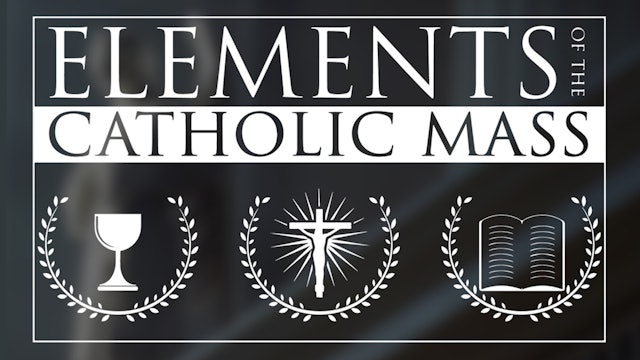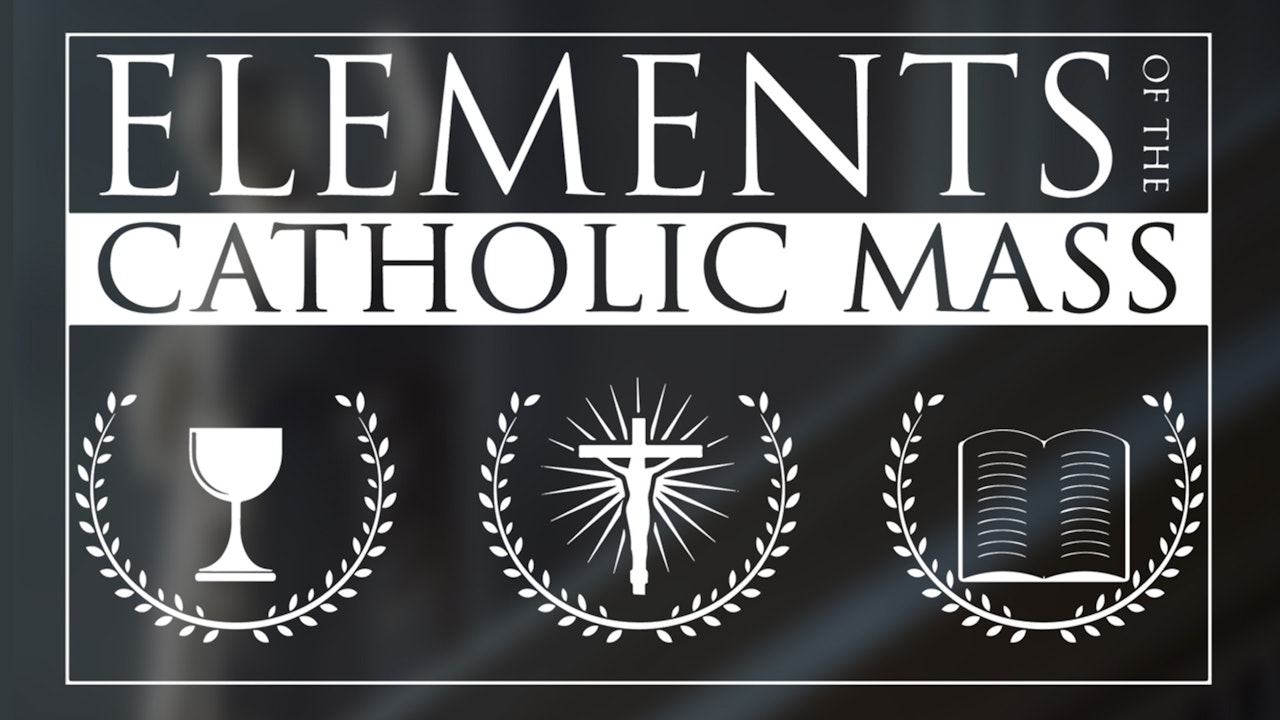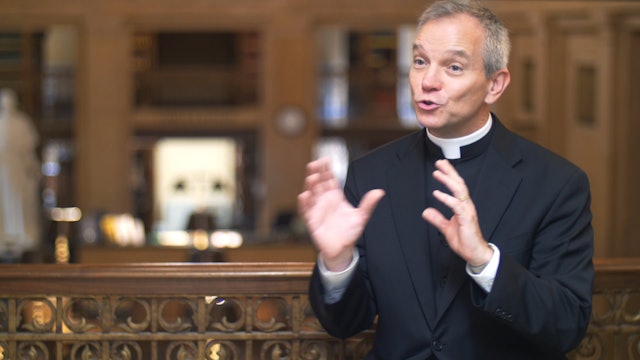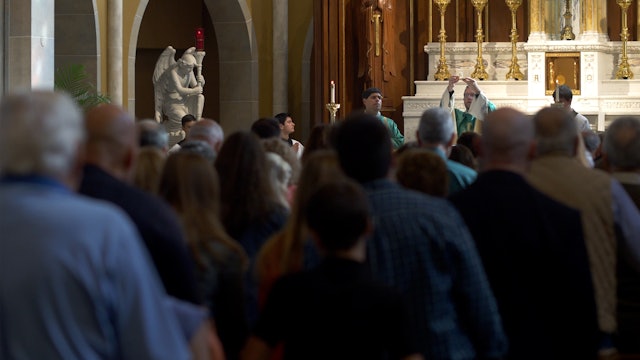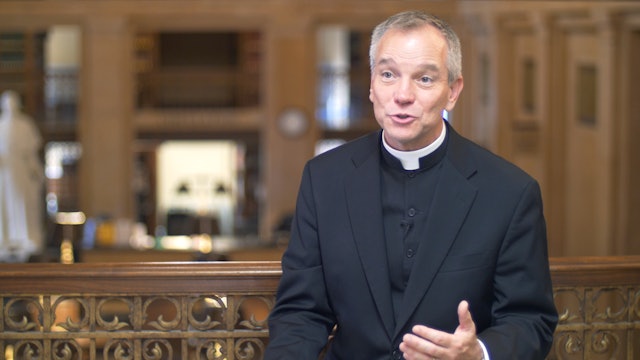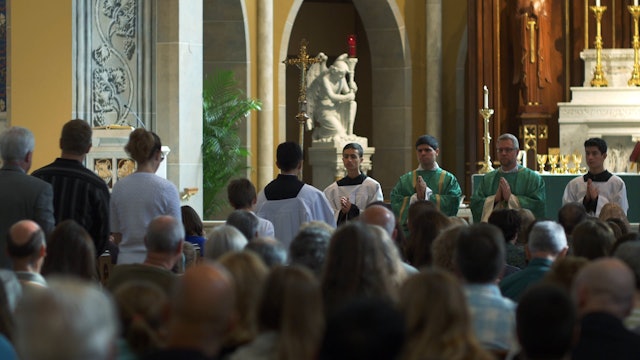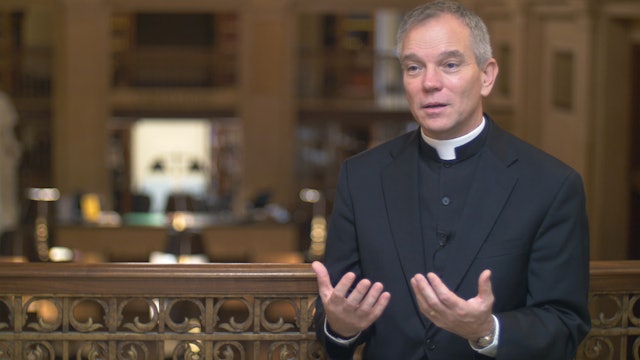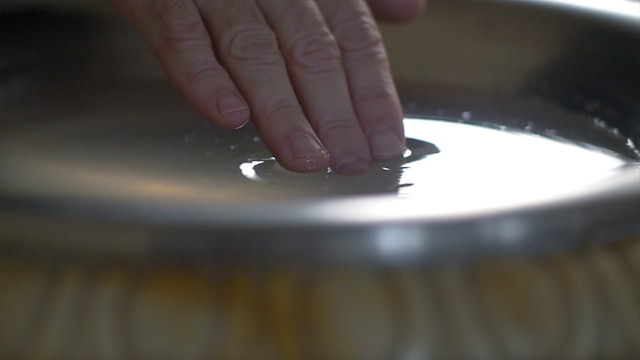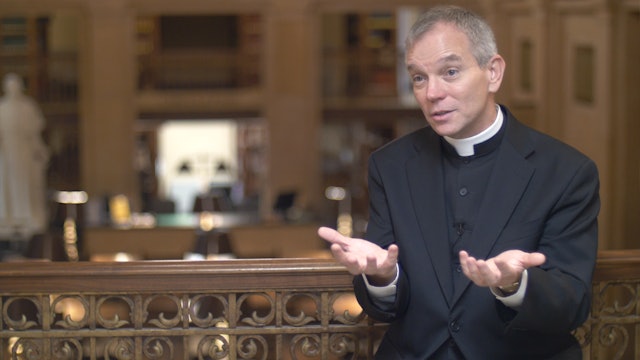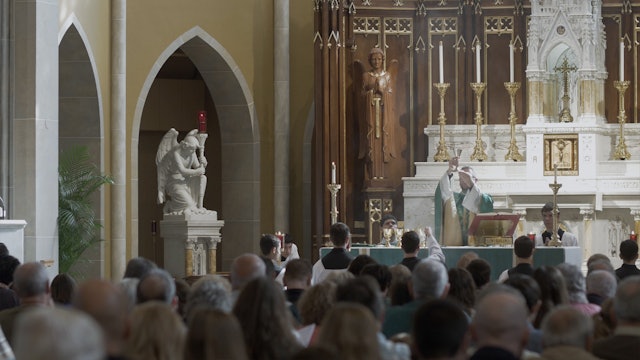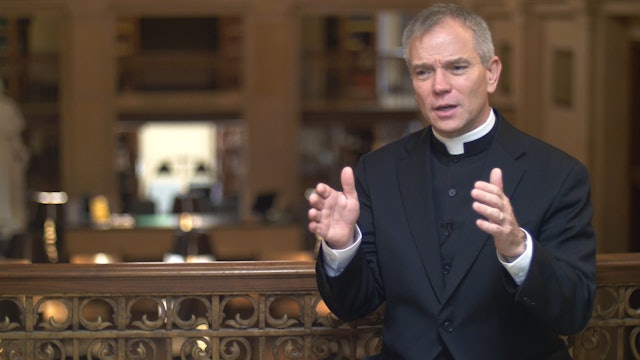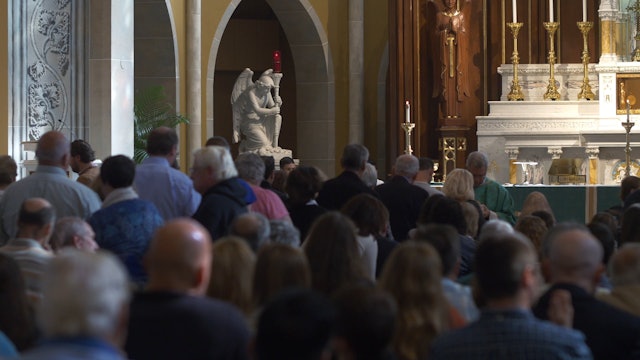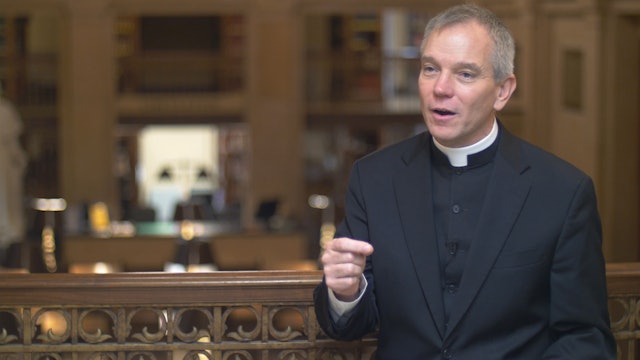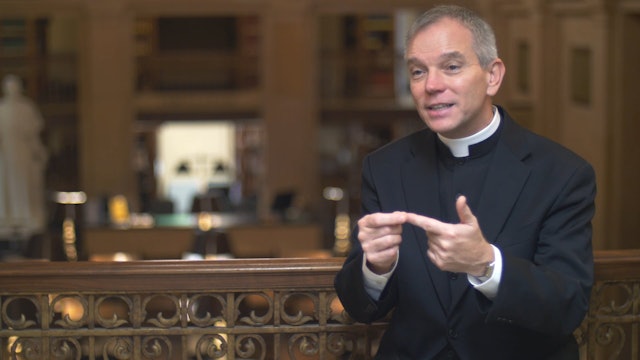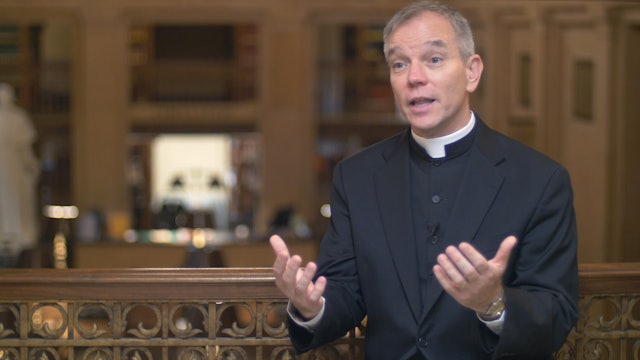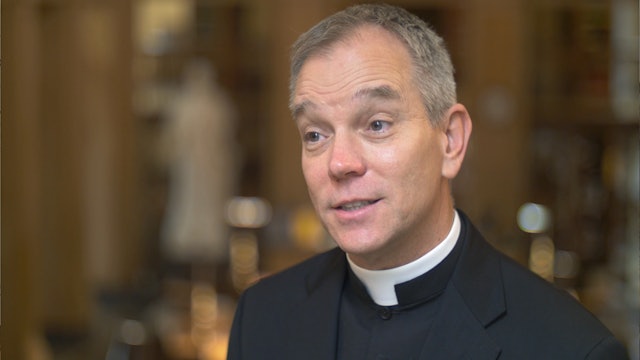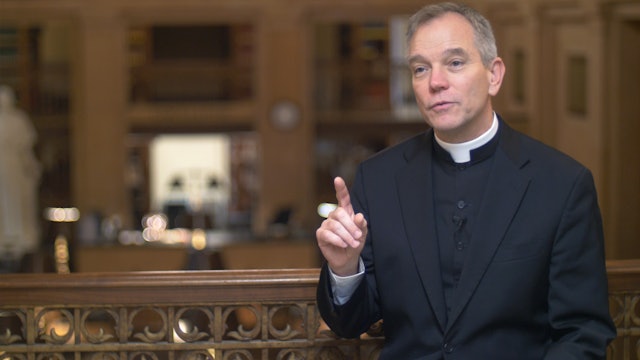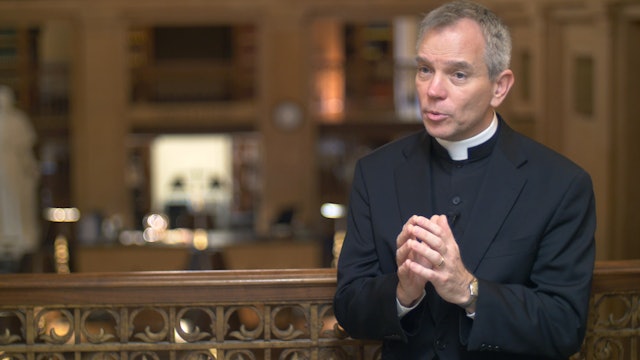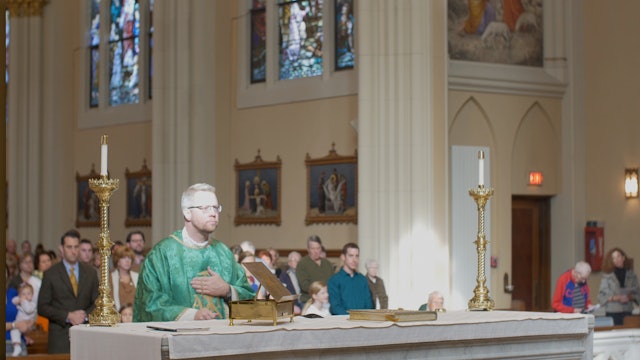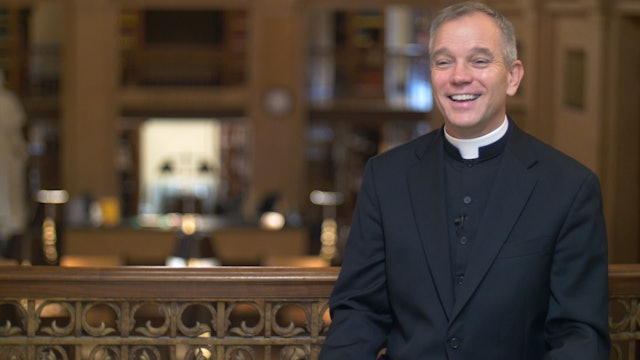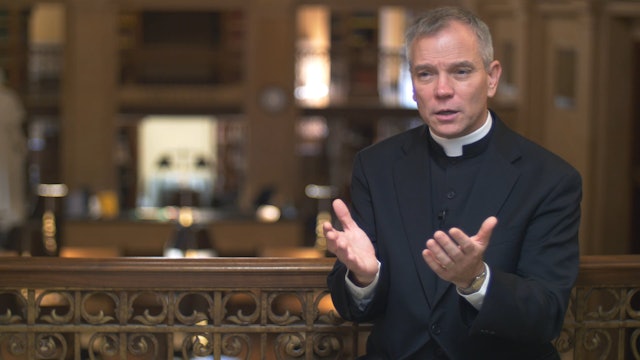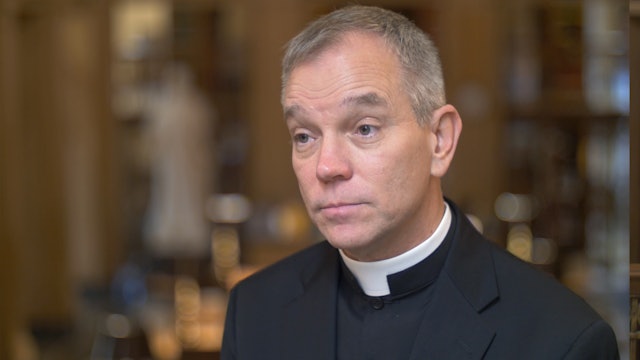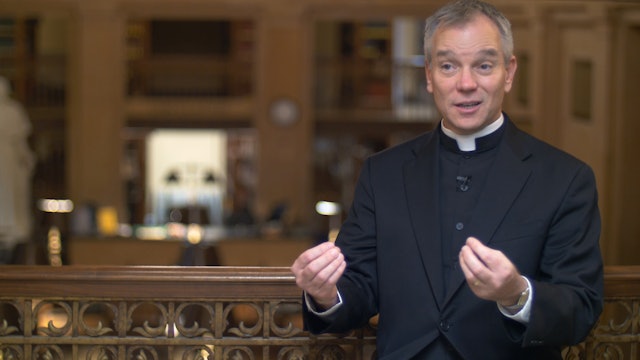The Elements of the Catholic Mass
31 Episodes
Elements of the Catholic Mass is designed to help the faithful better appreciate the beauty of the Mass. Featuring Fr. Douglas Martis, former director of the Liturgical Institute, the program consists of thirty-one beautifully produced short videos. Because each episode comes with a discussion guide with references, Elements of the Catholic Mass is ideal for personal faith formation or group discussion.
-
The Meaning of Liturgy
In our series premier, we find out the definition of the word "liturgy." While it technically means the work of the people, there are two more aspects that help us understand why we even have the Mass in the first place.
-
Intelligent Worship
The Second Vatican Council, in the Constitution on the Sacred Liturgy, called for "active participation" on the part of the Faithful. It also called for a participation that would be full and conscious. In this episode we learn the importance of worshiping intelligently.
-
The Role of the Parishioner
We Christians are here on earth as exiles. Many of us grow up in middle class Christianity. The danger with that is that we have everything we want and as a consequence we don't really long for heaven. In this episode we learn what the role of the parishioner is in the Catholic Mass.
-
The Church Building
In this episode, we dive into the meaning of the church building. The Catholic Church is a sacramental Church which means deeper realities are expressed in perceptible signs. The church building is not a neutral place; it is not simply a skin for liturgical action. It is a place where prayer happ...
-
Processions
A procession is an assembly on the move. It symbolizes, in every instance, our pilgrimage through this world to our true homeland; we are citizens of heaven. There is a difference between "gathering" and "assembly." A gathering can be any group. An assembly, on the other hand, is a group called t...
-
Signs and Symbols
The Catholic Mass is full of signs and symbols. Where do these signs come from? Where do they get their meaning? The Church teaches that the meaning comes from four categories: creation, human culture, the Old Testament and they are fully revealed in the mission of Christ narrated for us in the N...
-
Sacramental Signs
The Catholic Church teaches that a sacrament is an outward sign, instituted by Christ, to give grace. Or as the Catechism of the Catholic Church puts it: The sacraments are efficacious sign of grace, instituted by Christ and entrusted to the Church, by which divine life is dispensed to us. (n°. 1...
-
The Purpose of the Mass
In everything we do in life, it is essential to understand the goal or purpose, if we want to participate in a fruitful manner. In the Catholic Mass, the goal of our worship is quite clearly directed at the praise of God and the sanctification of the world. In fact, the Church puts these very wor...
-
Active Participation
The Church weaves the notion of active participation, together with full and conscious into her understanding. We should be engaged fully, conscious of what we are doing, aware of the liturgy's beauty and richness. This participation is first and foremost interior. Like Christ, we offer ourselves...
-
Who Says the Mass is Boring?
One often hears that Mass is boring. I like to say that if you find it boring, you're looking at the wrong thing. You are probably focused on its structure. Ritual requires structure. And so there is a sense in which Mass is the same: it's supposed to be repetitive! Repetition is absolutely essen...
-
Unity and Diversity in the Mass
The Church's most fundamental principle in the celebration of Mass is that of unity. She has no greater interest than to foster unity when remembering the great sacrifice of Christ for love of us. Our harmony with one another sacramentalizes our unity with him. Catholics express this unity by par...
-
Music—Part I
Music, in the mind of the Church, is not thought of as something added to the Mass; rather, music is an integral component of it. The Church describes her music as a treasure of inestimable value–and indeed, how rich is this musical heritage. As a unique combination of melody and word, sacred mus...
-
Music—Part II
The 1967 Instruction, Musicam Sacram, is the most definitive statement on music in the Mass since the Second Vatican Council. This Instruction both clarifies and articulates the Church's understanding of sacred music. Musicam Sacram describes three degrees or categories of texts of the Mass to be...
-
The Collect
"Collect" is the official term for what is generally known as the Opening Prayer of the Mass. This term is significant because it suggests how we ought to approach the opening oration. The prayer is preceded by the invitation of the priest: "Let us pray." Note that these words do not mean "Bring ...
-
Liturgy and Language
A frequent question, especially in light of the translation of the third edition of the Roman Missal, concerns the language of the Mass. Why do the words of Mass sound so different from the language we use in everyday life? Human beings express spiritual realities through cultural language, gestu...
-
Liturgist and Liturgiologist
What is the difference between a liturgist and a liturgiologist? This is an important question because the answer has an impact on how we approach participation in the Mass. A liturgist is one who offers public worship of God. The Church teaches that Christ is the Supreme Liturgist, offering hims...
-
Vestments—Part I
The vestments worn during Mass are sacramental signs. This suggests that they not only serve the practical purpose of covering street clothes, but that they also represent hidden realities. They signify that the celebration of the liturgy is not something ordinary, but that it takes us beyond the...
-
Vestments—Part II
The alb, along with the amice and cincture, is the sacred garment common to ordained and instituted ministers. The sacred vestments provide distance from the mundane reality of everyday life. They become a sacramental sign of the wedding garments of eternity, and prepare both faithful and ministe...
-
The Church Doors
The door of the church is not simply practical or pragmatic; it is not simply for entry and exit. The door of every church is a sacramental sign that reminds us of our future entry into paradise. Every church is dedicated before it is put into service for worship; its prayer of dedication tells u...
-
Incense at Mass
The Church herself tells us that incense is an expression of reverence and prayer. She prays along with Psalm 141: "Let my prayer be incense before you; my uplifted hands an evening offering." The Book of Revelation also gives an understanding of the use of incense, even in heaven: the incense is...
-
Bows in the Mass
The liturgy is comprised not only of words and music, it also includes gestures. These, too, are sacramental signs because they show in a visible way the hidden devotion of our hearts. A bow signifies reverence or honor to persons or the symbols that represent these persons.
-
The Book of the Gospels
The Church teaches that the proclamation of the Gospel is the high point of the Liturgy of the Word, the first part of Mass. The Gospel is so significant that the Church has a special book that contains just those words. The Book of Gospels, the repository for the Word of Christ, is another symbo...
-
The Word of the Lord
If you want to say the word, "word" in Latin, there are two choices. You can say "scriptum" or you can say "verbum." There is a very important distinction between the two words and the Church is very specific about the way she uses them in the text of the Mass.
-
The Creed
Notice that one of the first tasks of the liturgical assembly is for the different members to be formed into a single body. The "I" (ie., the first person singular pronoun) of the Creed is, in a sense, the "I" of the singular Body of Christ, who worships God the Father. It is also the personal "I...

